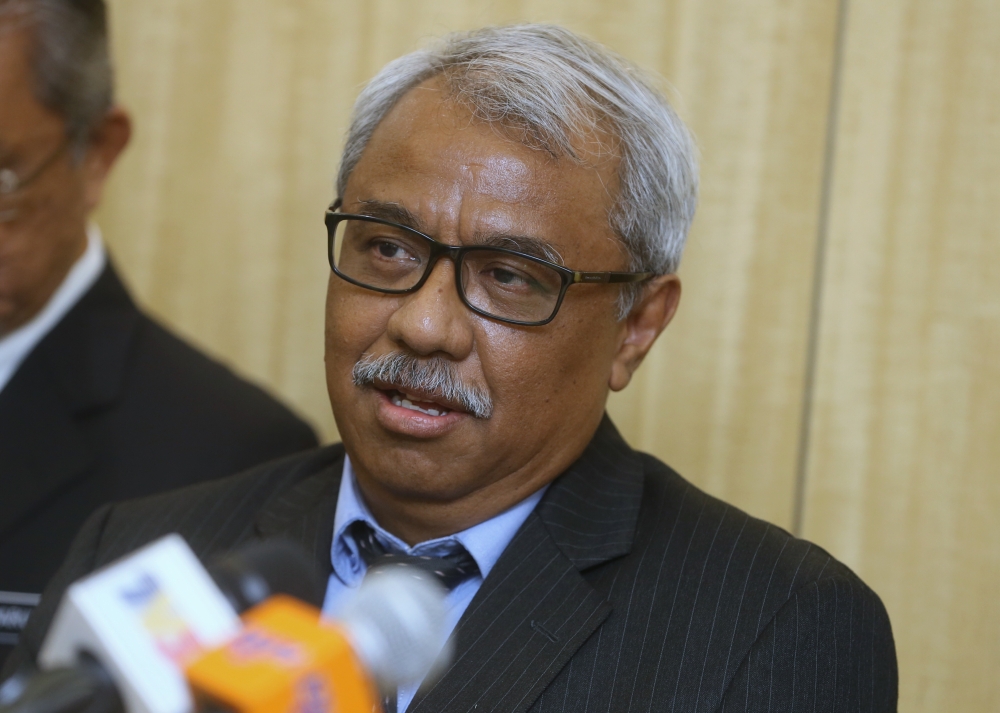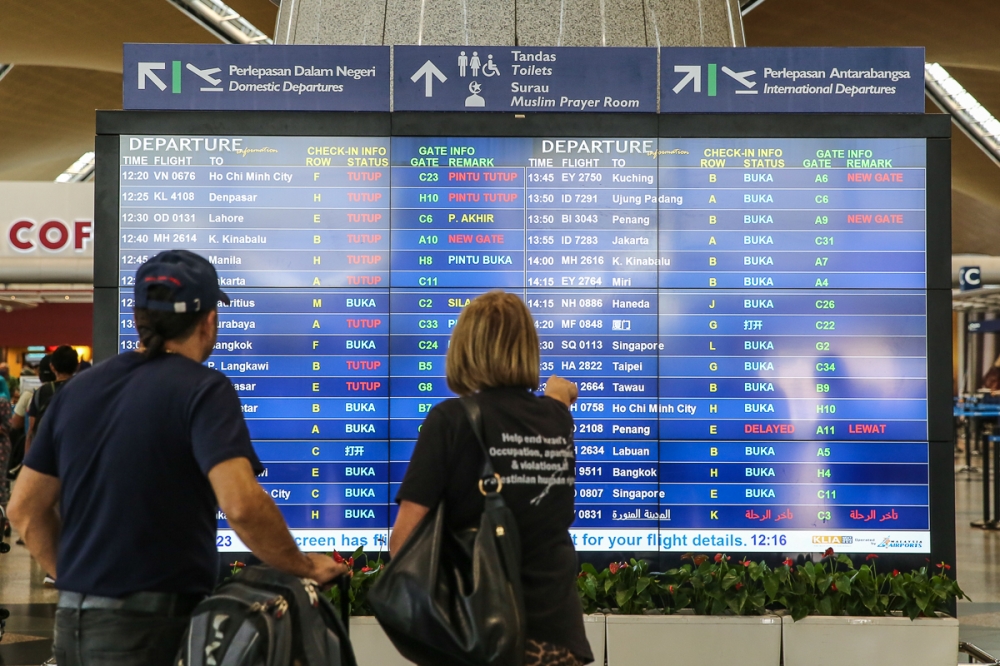KUALA LUMPUR, April 30 — Airfares will remain high for some time as experts view this as mainly an issue of supply and demand.
Despite the high airfares, economist Nungsari Ahmad Radhi said the travel and tourism industry will see robust growth.
“Our seasonal ticket price uptrend is largely driven by local factors: Local destinations, local demand, and local supply (airlines).
“Globally, the return of demand for air travel is hitting some supply constraints as airlines, and even airports struggle to increase capacity or flights. This is due to the lack of crew mostly.
“As a result, prices for international destinations have gone up compared to before the Covid-19 pandemic,” Nungsari told Malay Mail when contacted.
As for local destinations, he said flight ticket prices might have increased overall but they remain affordable if purchased early.
He referred specifically to the Penang (PEN)-Kuala Lumpur Sultan Abdul Azziz Shah (SZB) sector.
“Capacity has not fully recovered and peak demand during festivals will definitely see some price spikes especially for those buying late.
“And for specific routes. Those buying early will get reasonable prices,” he said.
For those who travel internationally, Nungsari said they will have to be prepared to pay a bit more while capacity recovers.

“The travel and tourism sector will see robust growth. It is a question of supply catching up with demand, something the industry will sort out.
“Prices may still be slightly elevated given there are supply constraints on staff especially. Staff costs will likely increase; hence, overall costs, as the industry seeks more staff,” he added.
He, however, does not see travellers being deterred by high airfares, especially international ones, as they have the means to travel.
“More people will, of course, travel with lower ticket prices, but more competition will also lead to lower prices of related services.
“Policies should focus on the poor, even the LRT (Light Rail Transit) and MRT (Mass Rail Transit) are expensive. Forget about air tickets.
“While I disagree with the imposition of ceiling prices, airlines should be monitored for predatory or excessive prices,” Nungsari said.
He stressed that it would take some time for airlines to get up to speed as most did not make it through the Covid-19 pandemic unscathed, with some not even surviving at all.
“So the supply side will take time to come back. Demand will recover faster.
“Hence, prices will be higher in the meantime. This is true for international travel,” he said.
Domestically, Nungsari said Malaysia has the same number of airlines as before the pandemic although AirAsia has PN17 (Practice Note 17) status and delayed restructuring, while Malaysia Airlines too hasn’t really recovered even though its recent results have been encouraging.
The PN17 status is issued by Bursa Malaysia to listed companies that are in financial distress. Companies that are categorised as PN17 will need to submit their proposal to the approving authority to restructure and revive the company in order to maintain the listing status.
High demand, low supply
Weighing in, Singapore-based independent aviation expert Brendan Sobie said airfares are high due to supply issues, as demand is very strong.
“I don’t think the high airfares are impacting the number of travellers. I say that as flights are full.
“There’s more a supply issue as demand is very strong. If demand wasn’t as strong, fares would be lower as airlines would need to simulate the market.
“But there is a supply-demand imbalance now with higher demand than supply. That’s why airlines can charge such high average fares,” Sobie said when contacted.
According to the aviation analyst, the ripple effect comes down to the fact that capacity or supply isn’t fully restored yet and is not keeping up with demand.
“So not as many people are flying — as there simply aren’t so many seats.
“In the pre-Covid-19 pandemic environment, there was overcapacity in Malaysia and regionally in South-east Asia too, so fares were very low — below the cost of airlines actually.
“Now there is under-capacity — more demand than supply.
“So more people would fly if there were more seats and if fares were lower, but this isn’t the case,” he said.
He reminded that demand for flights has been high since borders reopened as people want to travel again.
“But supply takes time to return so we still have less supply than before the pandemic.
“Airlines have been able to charge high airfares as their seats are in such high demand. They don’t need to stimulate the market with low fares like before the pandemic when there was overcapacity due to empty seats and intense competition.
“In Malaysia, I think capacity will catch up with demand and again exceed demand within the next several months,” Sobie said.
He said this is likely to happen sooner in Malaysia than other markets given the intensifying competition here.
“But for now, and the next few months at least, there will be a continued supply-demand imbalance leading to high fares,” he said.

Tourists’ budgets affected
Meanwhile, Bank Muamalat Malaysia Bhd chief economist Mohd Afzanizam Abdul Rashid said the rise in flight ticket prices will definitely affect tourists’ budgets.
“The rise in flight ticket prices have been visible. The Consumer Price Index (CPI) sub-component, namely Passenger Transport: Air, which accounted for 0.4 per cent of total CPI weight, has been rising at a fast clip since October 2023,” Afzanizam said when contacted.
As cited by Afzanizam, the following are the data points for year-on-year increment for the Passenger Transport for Air price index: October 2022 (+15.5 per cent), November 2022 (+16.1 per cent), December 2022 (+41.1 per cent), January 2023 (+43.7 per cent), February 2023 (+48.2 per cent) and March 2023 (+34.8 per cent).
“This goes to show airfares have been rising way above the national inflation rate of 3.4 per cent in March this year. Certainly, this will affect the tourists’ budgets,” he said.
“If we look at the composition of domestic tourism expenditure in 2019, the total expenditure for transport amounted to RM6.4 billion and accounted for 6.2 per cent of total domestic tourism expenditure in 2019.
“For domestic tourists, they might want to find other alternatives such as bus or even driving their own vehicle.
“Having said that, judging from the upwards trend in visitor arrivals and the appetite for Malaysians to spend, the rise in flight ticket prices may not derail their travel plans in a substantial way,” he said, adding that, Malaysians’ travelling patterns are behavioural rather than determined by affordability.
While tourists may tweak their budgets, Afzanizam said given the improvement in the state of labour market as indicated by the decline in the unemployment rate to 3.5 per cent in February (March, 3.6 per cent), it suggests that Malaysians have the means to travel by air.
“The reopening of the economy plays a major role in this, while the improving labour market condition may also contribute to the sharp rebound in the tourism-related industries and that includes aviation,” he added.






















